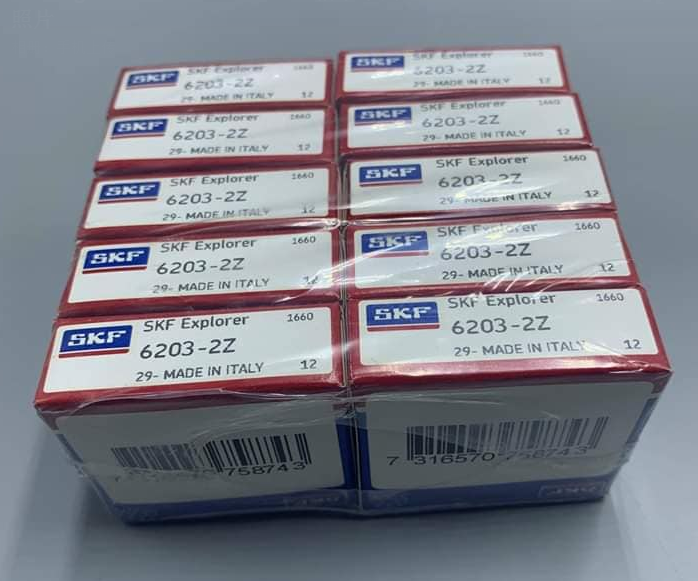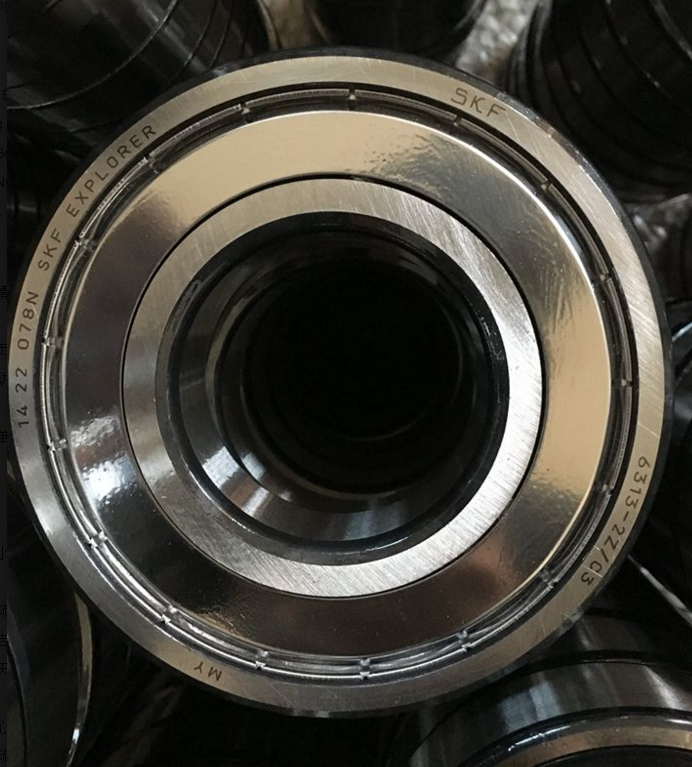Causes Of SKF Bearing Vibration Damage
The generation of vibration in SKF bearings Generally speaking, rolling bearings themselves do not generate noise. The "bearing noise" usually felt is actually the sound effect of the bearing directly or indirectly vibrating with the surrounding structure. This is why many times the noise problem can be regarded as a vibration problem involving the entire bearing application.
(1) Excitation due to the change in the number of loaded rolling elements: When a radial load is loaded on a SKF bearing, the number of rolling elements carrying the load will change slightly during operation, which causes a deviation in the load direction shift. The resulting vibration is inevitable, but it can be reduced by axial preloading, which is loaded on all rolling elements (not applicable to cylindrical roller bearings).Click here for SKF Bearing 6203-2Z.

(2) Local damage: Due to operation or installation errors, a small part of SKF bearing raceways and rolling elements may be damaged. During operation, rolling over damaged bearing components will produce specific vibration frequencies. Vibration frequency analysis can identify damaged bearing components. This principle has been applied to condition monitoring equipment to detect bearing damage. To calculate the bearing frequency, please refer to the calculation program "bearing frequency".
(3) Accuracy of related parts: In the case of tight fit between the SKF bearing ring and the bearing housing or the transmission shaft, the bearing ring may deform due to the shape of the adjacent parts. If deformation occurs, vibration may occur during operation.
(4) Contaminants: If operating in a polluted environment, impurities may enter the bearings and be crushed by the rolling elements. The degree of vibration generated depends on the number, size and composition of the crushed foreign particles. Although it does not produce the typical frequency form, it can hear an annoying noise.
The reasons for the noise of rolling bearings are more complicated. One is the wear of the matching surfaces of the inner and outer rings of the bearing. Due to this wear, the matching relationship between the bearing and the housing, and the SKF bearing and the shaft is destroyed, causing the axis to deviate from the correct position and producing an abnormal noise when the shaft moves at high speed. When the bearing is fatigued, the metal on the surface will peel off, which will also increase the radial clearance of the bearing and produce abnormal noise. In addition, the lack of lubrication of the bearing, the formation of dry friction, and the fracture of the bearing will produce abnormal sounds. After the bearing is worn and loose, the cage is loose and damaged, and there will also be abnormal noise.Need SKF Bearing 6313-2Z/C3,click here for more information.

1. Bearing maintenance: In order to maintain the original performance of SKF bearings in good condition for as long as possible, it must be maintained and repaired to prevent accidents before they occur, ensure the reliability of operation, and improve productivity and economy.
Maintenance should be performed regularly in accordance with the operating standards of the machine's operating conditions. The contents include monitoring the running status, replenishing or replacing lubricants, and regular disassembly inspections. The maintenance items in operation include SKF bearing rotation sound, vibration, temperature, lubricant state, etc.
2. Maintenance of the bearing: cleaning of the bearing: When removing the bearing for maintenance, first record the appearance of the SKF bearing, confirm the residual amount of lubricant, and wash the bearing after sampling the lubricant for inspection. As a cleaning agent, gasoline and kerosene are generally used.
The removed bearing is divided into coarse cleaning and fine cleaning, and placed in the container separately. Put the bottom of the metal mesh pad first so that the bearing does not directly contact the dirt of the container. During rough cleaning, if the bearing is rotated with dirt, it will damage the rolling surface of the bearing, so care should be taken. In the coarse cleaning oil, use a brush to remove grease and adhesions. After it is roughly clean, transfer to fine washing.
Fine washing is to carefully clean the bearing while rotating it in the cleaning oil. In addition, the cleaning oil should also be kept clean.
3. Maintenance and judgment of the bearing: In order to judge whether the disassembled bearing can be used, it should be checked after the SKF bearing is cleaned. Check the condition of the raceway surface, rolling surface, and mating surface, the wear of the cage, the increase in bearing clearance, and any damage or irrespective of dimensional accuracy reduction. For non-separable small ball bearings, use one hand to support the inner ring horizontally, and rotate the outer ring to check whether it is smooth.





